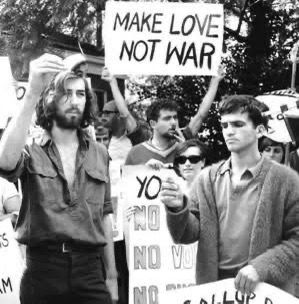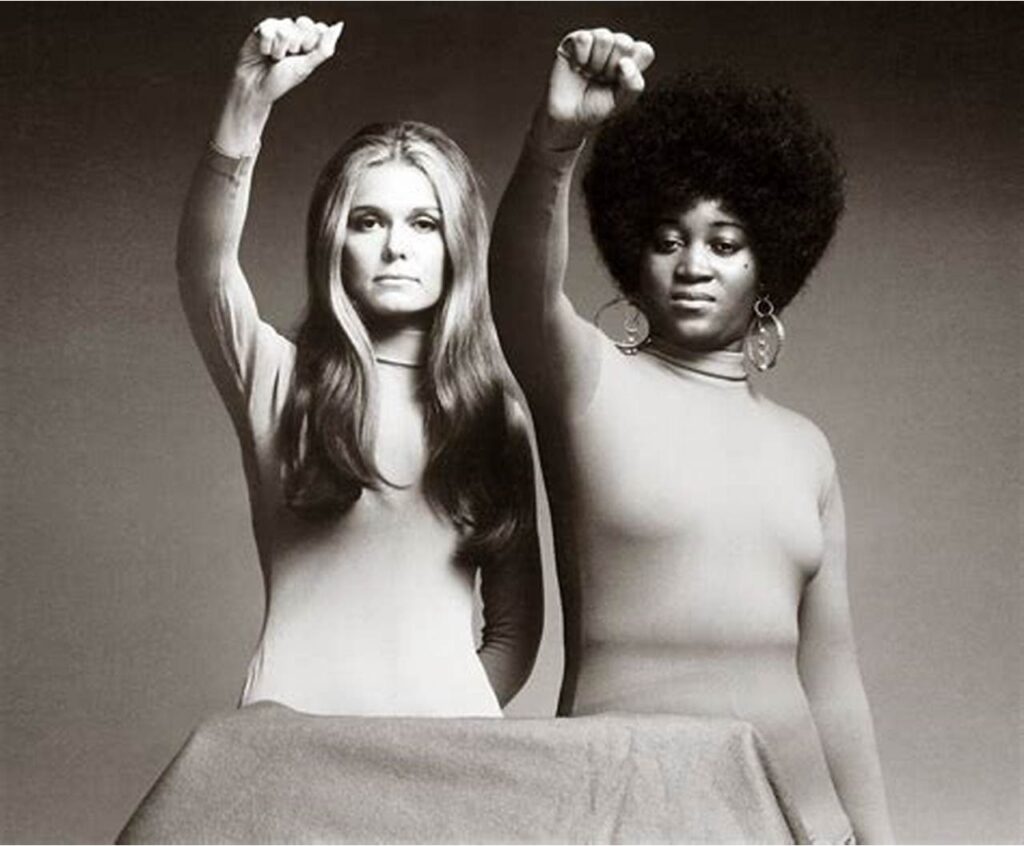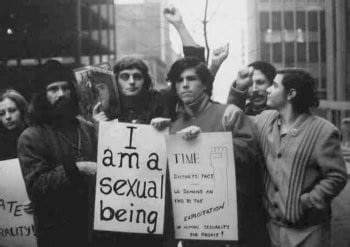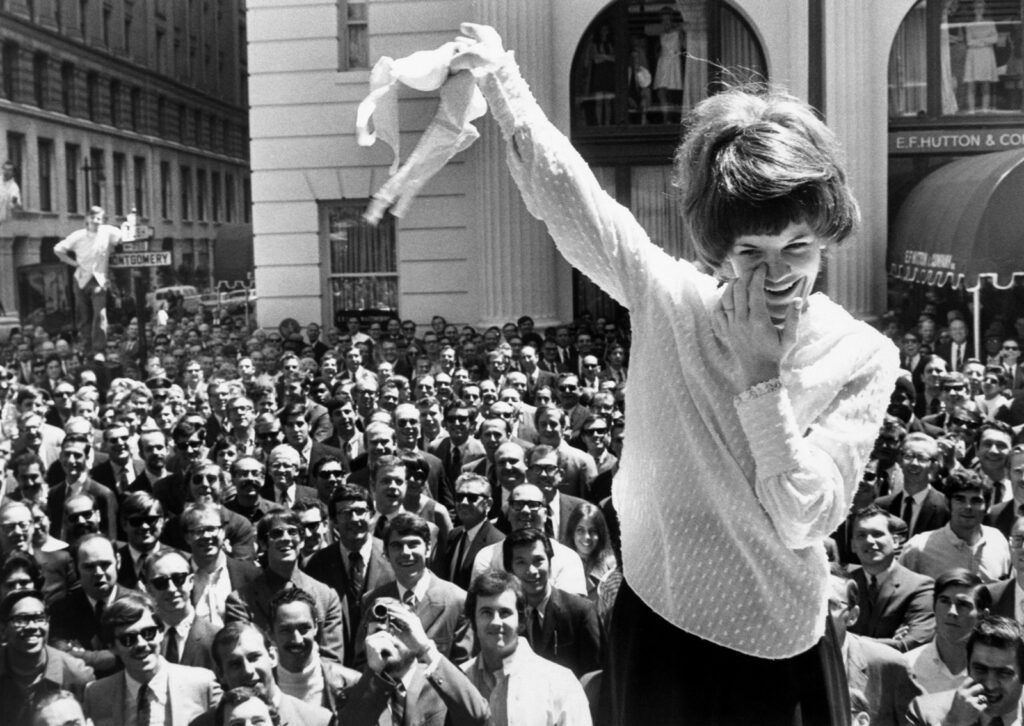
The 1960s transformed traditional norms surrounding sex, love, and relationships, questioning and radically changing them. The Free Love movement of the 1960s rejected monogamy, marriage, and sexual repression. The effects of this revolution reached far beyond the ’60s and continue to shape the way we approach relationships today. The sexual revolution, from birth control to counterculture, broke barriers, fostering sexual freedom, autonomy, and new views on intimacy.
We’ll explore the Free Love movement’s link to the Sexual Revolution and its lasting impact on dating, marriage, and monogamy. We’ll also discuss the complex ways this cultural shift has continued to evolve and influence modern relationships.
What Was the Free Love Movement?

Before diving into its historical impact, it’s important to understand what the Free Love movement was all about. It was a movement that encouraged expressing sexual desires freely, without traditional constraints of marriage or monogamy.
This idea was radical, as many parts of the Western world still held conservative views, linking sex to marriage and procreation. The Free Love movement challenged old norms, asserting that love and sex shouldn’t be confined by societal rules. This radical shift paved the way for greater sexual freedom and individual autonomy, leaving a lasting impact on societal views about intimacy and relationships. Advocates of Free Love argued for sexual relationships based on mutual affection and consent, without societal judgment.
The 1960s counterculture movement popularized the idea, rooting it in the larger upheaval against conventional social structures. Sexual liberation was viewed as crucial to the individual freedoms sought by youth during the movement.
The Roots of Free Love: The Precursor Movements
To understand the Free Love movement’s emergence, we must examine the socio-political climate of the 1960s.
- Women’s Liberation and Gender Equality: The late 1950s and early 1960s saw the beginning of the modern feminist movement. Women sought control over their bodies and lives, questioning their roles in a patriarchal society. The birth control pill in 1960 gave women autonomy over their fertility, revolutionizing relationships and sex.
- Civil Rights Movements: African American communities were fighting for equality, and many activists viewed traditional relationship norms as societal control. This perspective added to the broader movement for social change and freedom during that era. The intersection of these struggles highlighted the need for a more inclusive and equitable approach to relationships and societal structures.
- The Beat Generation: Beat Generation writers like Jack Kerouac and Allen Ginsberg challenged 1950s norms, advocating for personal freedom and breaking social barriers. These principles became key tenets of the Free Love movement. Their work laid the groundwork for cultural shifts, emphasizing individual autonomy and freedom of expression in shaping views on sexuality and relationships.
The Sexual Revolution: The Stage Is Set for Change
The 1960s marked the beginning of the Sexual Revolution, a cultural shift that radically altered how people thought about sex, love, and relationships. The Free Love movement was one of the main driving forces behind this revolution, which sought to challenge traditional, restrictive attitudes toward sex and relationships.
The Birth of the Birth Control Pill

The birth control pill played a pivotal role in the sexual revolution. The pill, introduced in 1960, gave women unprecedented control over their reproductive health, alleviating fears of unwanted pregnancies. Women could now have sex for pleasure, intimacy, and love without the threat of pregnancy, changing sexual relationship dynamics.
Before the pill, the only reliable form of contraception was condoms or, for married couples, natural family planning. The introduction of the pill, however, provided women with greater sexual autonomy. This enabled women to embrace their sexual freedom and explore relationships outside the confines of marriage.
The pill also played a role in dissolving the traditional idea that sex was only for procreation. Sex and marriage became less rigidly connected, as couples engaged in sex without necessarily planning to have children. This shift opened the door to more casual sex, further promoting the ideals of the Free Love movement.
The Influence of Counterculture and Anti-Establishment Sentiment

The counterculture movement of the 1960s was crucial in shaping the ideals of Free Love. At its core, counterculture was about rejecting the mainstream, which was seen as overly conformist and materialistic. The youth of the time rebelled against the “establishment,” which included traditional views on sex, marriage, and relationships.
The hippie movement, which emerged out of the counterculture, fully embraced the ideas of Free Love. Young people increasingly adopted communes, collective living, and alternative lifestyles, rejecting conventional norms. In places like San Francisco and Woodstock, young people flocked to the movement, promoting sexual freedom as part of their broader social revolution.
This anti-establishment sentiment was not limited to politics. The free-spirited nature of the counterculture sought to redefine the personal realms of love and sex as well. Woodstock symbolized a new era of sexual liberation, where young people gathered to embrace alternative sexual values.
Free Love’s Impact on Dating, Marriage, and Relationships
The Free Love movement didn’t just reshape the culture of the 1960s; it had a long-lasting impact on modern relationships, dating norms, and marriage. Radical ’60s ideas became part of contemporary society’s fabric, evolving over time.
1. The Decline of Traditional Marriage Norms
In the years following the Sexual Revolution, marriage underwent significant transformation. Before the ’60s, marriage was seen as a sacred and often unbreakable institution. For many, marriage was not only a legal contract but also a moral obligation that governed sexual activity.
The rise of Free Love led society to question if traditional marriage was the only way to form a committed relationship. Young people saw marriage as one option, with some choosing cohabitation or other non-traditional relationships.
2. The Rise of Cohabitation and Premarital Sex
Perhaps the most significant shift in the wake of the Free Love movement was the normalization of premarital sex and cohabitation. In previous generations, engaging in sexual activity before marriage was often stigmatized. However, as attitudes toward sex became more relaxed, having sex outside of marriage was no longer viewed as taboo.
Cohabitation—the act of living together without marriage—also became more common. By the 1970s and 1980s, couples were increasingly choosing to live together before tying the knot, seeing it as a way to test compatibility. In fact, many couples now live together for years before deciding to marry or never marry at all.
This shift is a direct result of the Free Love movement, which created a cultural environment where sex and love were seen as personal experiences rather than rigid societal duties.
Reimagining Monogamy: A New Understanding of Commitment
One of the most enduring legacies of the Free Love movement is the way it reshaped our understanding of monogamy and commitment.
Challenging the Traditional View of Monogamy
Before the 1960s, monogamy was viewed as the cornerstone of romantic relationships. In many cultures, including Western society, monogamy was not just a choice—it was expected. The notion of lifelong, exclusive partnerships was the basis of most marriages, and any deviation from this model was often seen as immoral or sinful.
However, the Free Love movement made many people question whether lifelong monogamy was inherently natural or simply a cultural construct. Some individuals and communities began to explore open relationships, where partners could have romantic or sexual relationships with others outside of the main partnership, with the knowledge and consent of all parties involved. This shift led to the rise of polyamory—the practice of engaging in multiple consensual, loving relationships at the same time.
For many, the ideas of Free Love prompted a reevaluation of the idea of possessiveness in relationships. Free Love advocates argued that love is not about ownership but rather about personal connection, respect, and freedom. This idea has influenced modern discussions about open marriages and polyamory, where the focus is on emotional connection rather than sexual exclusivity.
Monogamy Today: Still the Norm or a Thing of the Past?
Despite the rise of alternative relationship models, monogamy is still the most common arrangement in many parts of the world, particularly in the West. However, the expectations around monogamy have evolved over the decades. More people now enter into relationships with an understanding that monogamy might look different for everyone, and that it’s okay to explore non-traditional routes.
The rise of dating apps, which often promote casual encounters, has also fueled the shift toward non-traditional relationships, where people meet for one-time experiences or short-term relationships, without necessarily seeking long-term commitment.
The Legacy of Free Love: Sexual Liberation and Modern Intimacy

The Free Love movement did more than just change how we date and marry. It sparked a broader cultural shift toward sexual liberation and personal freedom that continues to influence our modern understanding of intimacy.
More Open Discussions About Sex and Sexuality
The Free Love movement helped normalize the conversation about sex in ways that were previously unthinkable. In previous generations, sex was a subject rarely discussed openly. But by the 1970s, the conversation began to expand. Books like The Joy of Sex and Our Bodies, Ourselves started to educate people about healthy, consensual sexual relationships and opened the doors for more candid discussions about sex.
Today, this trend continues with platforms dedicated to open and healthy conversations about sexual identity, preferences, and boundaries. Social media, blogs, and podcasts have all contributed to the normalization of discussing sex, leading to a more informed, empowered generation of sexually liberated individuals.
Read Also:
Fashion and Identity: How Clothing Choices Reflect Who We are
Why Body Shaming is Still Prevalent: The Dark Side of Social Media
Recognizing Emotional Unavailability: How to Connect with Your Partner
The Role of Faith in Overcoming Life’s Challenges
Conclusion
The Free Love movement of the 1960s was more than just a temporary cultural moment—it was a radical transformation in the way people viewed love, sex, and relationships. Its legacy lives on in the diversity of relationship structures we see today, from monogamy to polyamory, and in the ongoing discussions about sexual freedom and identity.
While society has changed since the 1960s, the fundamental idea behind the movement remains relevant: love, sex, and relationships should be about personal freedom and respect, not societal constraints.
Whether we are rethinking marriage, exploring casual relationships, or embracing non-monogamous arrangements, the Free Love movement of the past continues to shape how we approach intimacy and connection in the modern world.
FAQs
- What did the Free Love movement stand for?
The Free Love movement advocated for sexual liberation and autonomy, encouraging individuals to express their sexuality freely without societal constraints or judgment. - How did the introduction of the birth control pill impact society?
The birth control pill gave women control over their fertility, which allowed them to engage in sex without the fear of unwanted pregnancy, thus supporting the ideas of sexual freedom promoted by the Free Love movement. - Is polyamory related to the Free Love movement?
Yes, polyamory and other forms of consensual non-monogamy are part of the broader legacy of the Free Love movement, which questioned traditional concepts of monogamy and romantic exclusivity. - Did the Free Love movement lead to a rise in casual sex?
Yes, the movement helped normalize casual sex by promoting the idea that sex should be a consensual, enjoyable experience rather than something confined to marriage. - How has Free Love impacted modern dating and relationships?
The Free Love movement contributed to the normalization of diverse relationship structures, including premarital cohabitation, open relationships, and casual dating, reshaping the way we approach love and commitment today.


